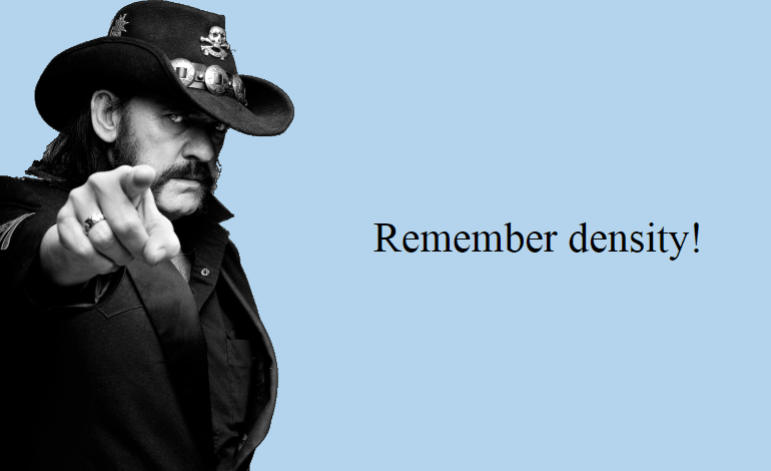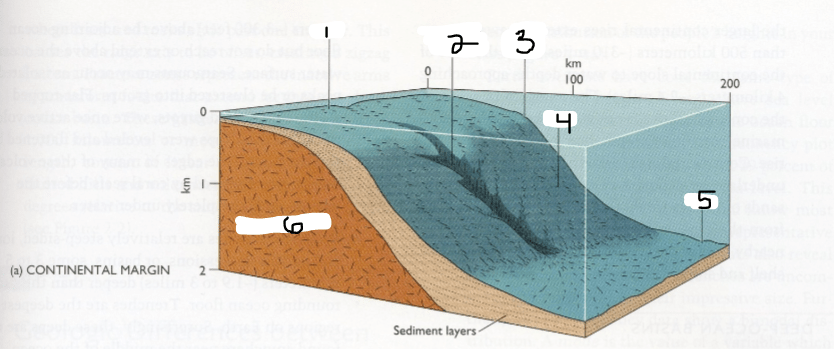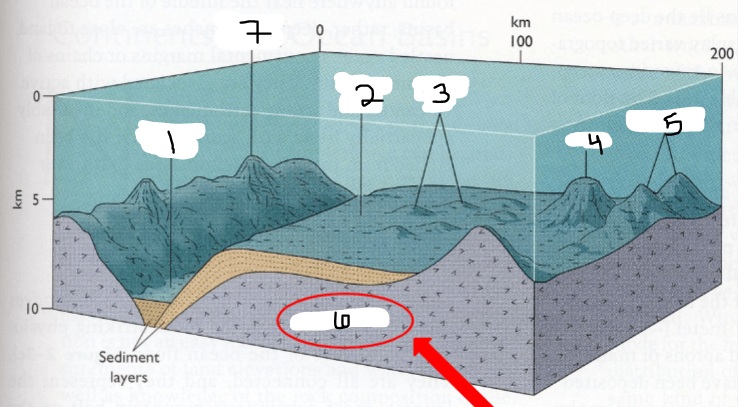Oceano - from the Greek word okeanos, or Oceanus (name of the Titan son of the gods Gaea and Uranus, his offspring were ocean nymphs and Styx)
Graphy - from the Greek word graphia, meaning the act of recording and describing
Density
Define isostasy.
The rising or settling of a portion of the Earth's lithosphere when mass is removed or added; is meant to maintain equilibrium between buoyancy forces that push the lithosphere upward, and gravity forces that pull the lithosphere downward.
In other words, isostasy is when pressure is equal everywhere and mass balance is achieved.
What is the difference between a normal and reverse transform fault?
Normal faults move away from each other- divergence, like at the mid-ocean ridges
Reverse faults move towards each other- convergence, like when terrestrial mountains are forming

True or False?
Magnetic field lines do not intersect the surface at angles that vary directly with the position on Earth
False;
Magnetic field lines do intersect the surface at angles that vary directly with the position on Earth
What are the four disciplines of oceanography?
- Physical: investigates the causes and characteristics of water movement (e.g., tides, currents)
- Chemical: the study of composition and history of the water, its processes and its interactions
- Biological: the study of marine organisms and the relationship between these organisms and the environment in the oceans
- Geological: the study of the Earth at the sea edge and below its surface, and the history of the processes that formed the ocean
What is the unit for density again?

g / cm3 (also can be written as g cm-3 without the slash)
Isostasy accounts for...
- Lighter, thick granite continent floats higher on the mantle
- More dense, thin basalt crust lies deeper
Who proposed the idea of continental drift, and what was the original landmass called?
Alfred Wegener originally proposed continental drift, Pangea was our original continent.
Who proposed that the crust of the Earth was made up of blocks?
Harry Hess in 1960
Why did western Europeans in the 15th and 16th century start to undertake long sea explorations?
Economic (money!), political (extend the kingdom!), and religious motives
1. What are the chemical layers of the Earth?
2. What are the physical layers of the Earth?
3. What are the outer layers of the Earth?
1. Crust, mantle, core
2. Lithosphere, asthenosphere, mesosphere (and outer core)
3. Hydrosphere, atmosphere, biosphere
What is the relative age of guyots compared to seamounts?
Older
Who discovered the mid-ocean ridge, when was it discovered and when was it made public?
Marie Tharp discovered the mid-ocean ridge in 1952 and was made public in 1956.
How did Marie Tharp get her data and why did she have to get it this way?
She had to have the data brought to her for her to analyze it because she wasn't allowed on research vessels.
The period "Modern Oceanography" is said to have started with the voyage of The _______ (fill in the blank).
Meteor
Midocean ridges are always mid-ocean. (True or False)
Mid-ocean ridges are segmented due to 1)________, and inactive arms of transform faults are called 2)_________. (fill in the blanks)
1) transform faults
2) fracture zones
Describe the two groups of earthquakes
One group are shallow and relatively weak which happen at mid-ocean ridges
The other group are strong, and shallow-deep (high vertical distribution)
What are high and low magnetic readings characterized as when using a magnometer?
Magnetic anomalies
High: stronger than expected
Low: weaker than expected
Label the following diagram of the continental margins.
1. Shelf
2. Submarine canyon
3. Shelf break
4. Slope
5. Rise
6. Continental crust
Label the following structures found in deep-ocean basins

1. Deep-sea trench
2. Abyssal plain
3. Abyssal hills
4. Guyot
5. Seamounts
6. Oceanic crust
7. Submarine volcanoes
How is Earth's magnetic field like a bar magnet?
It is dipole
Placed at the center almost along the rotational axis
They have a similar magnetic field
Which two British geophysicists proposed seafloor spreading in 1963?
Fred Vine and Drummond Matthews